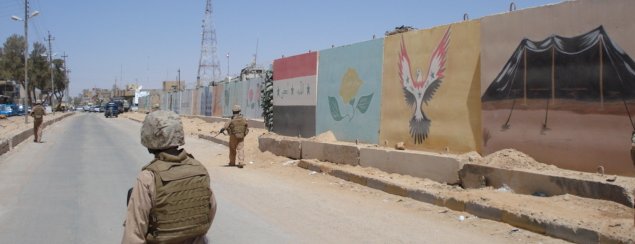The picture below is a fort built by the British in sometime around 1927. The British ran Iraq as a League of Nations Mandate until 1932, when Iraq became an independent monarchy under King Faisal, of Lawrence of Arabia fame. Even after independence, the British maintained bases here. I don’t know if this was among them. In fact, most people don’t think much re this fort, but it is still in use as a police HQ. The British built to last.

When the fort was built there was nothing around it but desert. Rutbah’s claim to significance is that it is a “wet spot” that gets around 4.5 inches of rain a year, and it had a well. The Fort guarded the road that connected Amman with Baghdad and the oil pipeline. If you didn’t have to stop for borders or checkpoints, you could drive from Amman to Baghdad in around 16 hours. Rutbah and the fort are around the half way point. It goes to show how much has changed. Back in 1927 the fort was in the middle of nowhere. It is still in the middle of nowhere today, but around 50,000 people live in and around Rutbah.
I can only imagine how isolated it must have been in the 1920s. I can picture those Brits with their khaki and pith helmets. My friend Tim R bought me a pith helmet as a joke. Of course I cannot wear it here, but I wish I could. They are really good for keeping you cool. Air moves easily inside and if you soak them in water the evaporation over a couple hours really helps lower the temperature inside. They are very good for hot and dry places, which is probably why they were so popular. But they have the unmistakable connotation of old-fashioned empires. Both pith helmets and old fashioned empires are out of style these days.

When I was trying to confirm that date of the fort, I ran across this interesting article about Rutbah a few years ago. It sounds familiar. Above is a new mural on the police station wall. Our ePRT helped pay for it. I read in this article that this once had a Saddam mural. We painted over it. All these murals kind of look alike. I don’t like them, but I suppose the blank wall bothers people.
